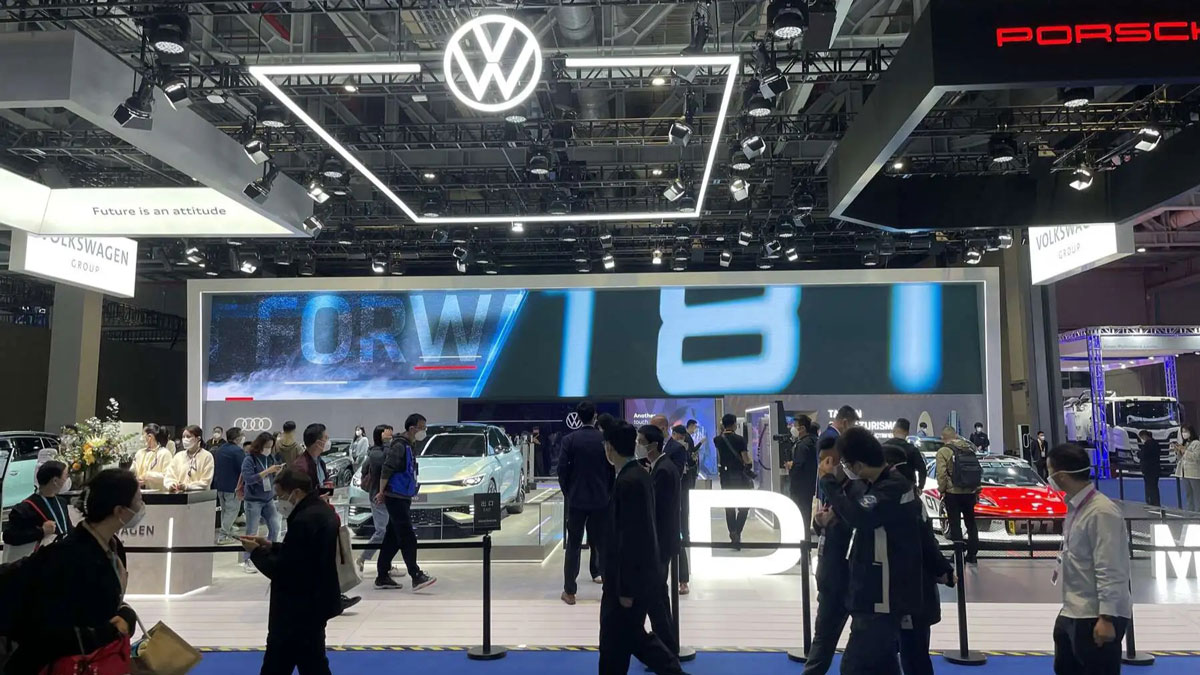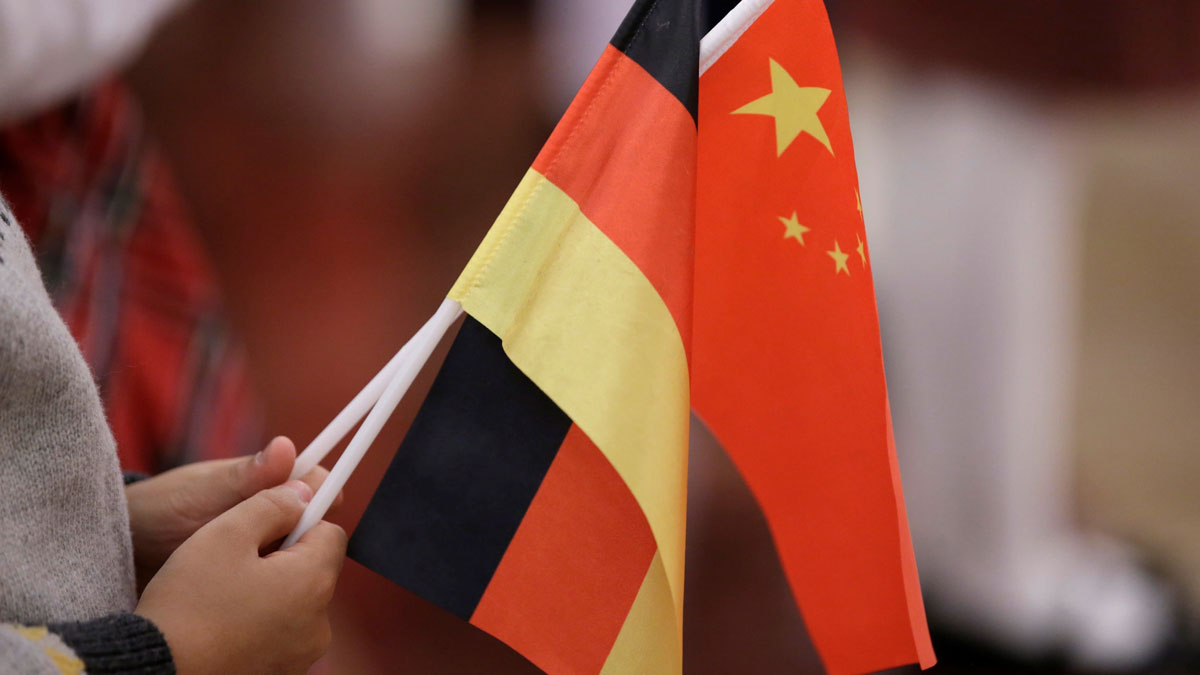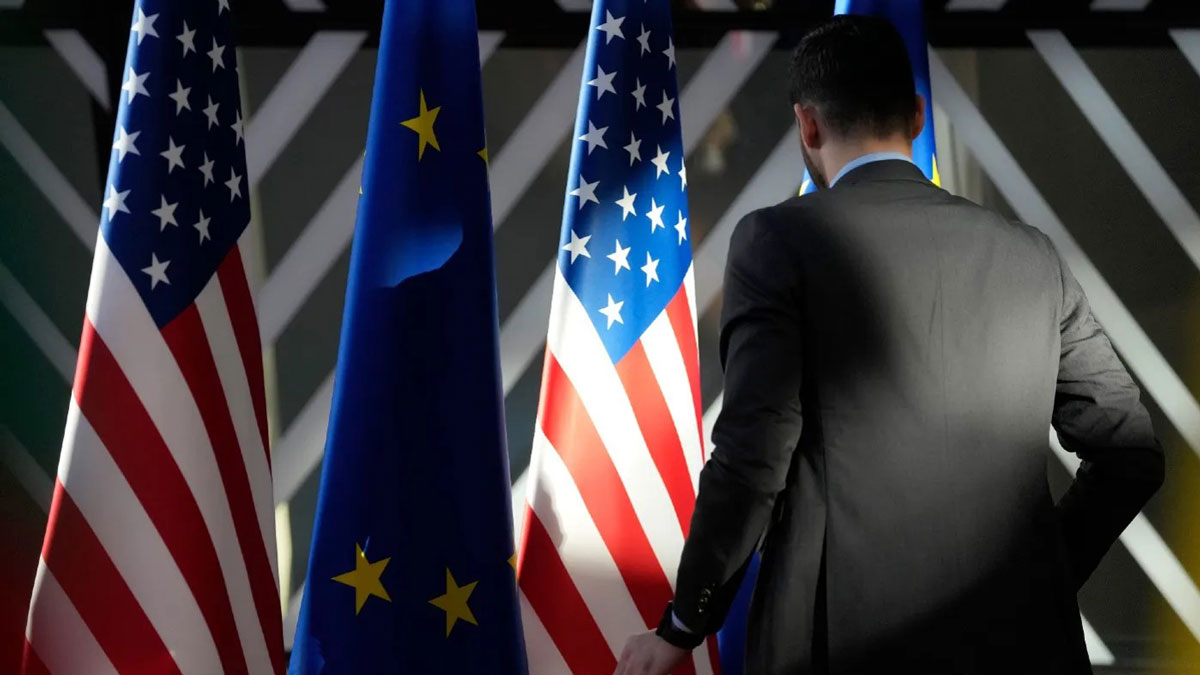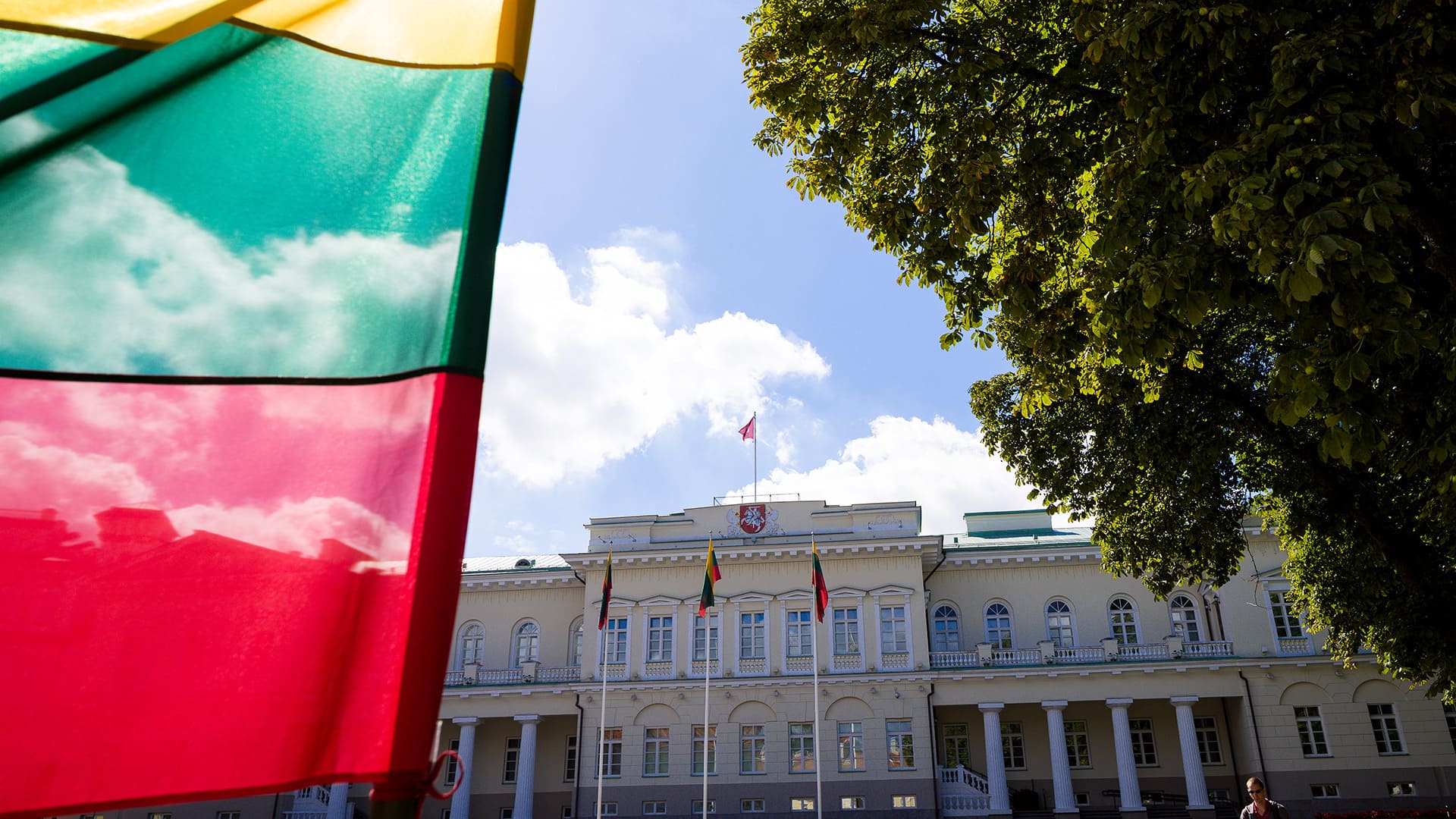Published 08 July 2025
China is now, at times, in a position that the West once occupied. In sectors like EVs and batteries that China is now globally dominant, Beijing needs to offshore some production while keeping value and jobs onshore and minimizing technology leakage, even as Western and especially European companies want more of the Chinese value chain for themselves. Sound familiar? Just as in the reverse situation, there is little to suggest a pragmatic compromise is going to emerge anytime soon.
Not long ago, the idea that Western and developed East Asian countries had much to learn from China seemed fanciful. Recent developments indicate that in a growing array of industries, China is a couple of years or even just months behind the cutting edge.
In others, China is ahead – sometimes, far ahead. Electric vehicles (EVs) and batteries stand out as two sectors where China has leapfrogged foreign rivals to take a clear technological lead. To survive Chinese competition, Western, and especially European, companies find themselves in the unprecedented position of tapping into Chinese engineering, battery, and software expertise.
China is now, at times, in a position that the West once occupied. Beijing wants to keep as much value and jobs onshore as possible, whilst minimizing technology leakage. But the EU’s ever more assertive regulatory agenda shows Brussels has no intention of becoming merely the pitstop for the final assembly of Chinese EVs and batteries. Europe wants more of the value chain for itself. There is much at stake for Brussels, not least Europe’s ability to decarbonize and remain globally competitive whilst avoiding the hollowing out of its automotive sector.
Emerging from the fog of lockdown
China’s dominance of EVs and batteries now feels like a natural feature of the modern automotive industry.
In fact, China’s dominance is a strikingly recent development. Just 10 years ago, China produced fewer than 100,000 EVs, most of which were more expensive than EVs made in the US and Europe.1 It was only four years ago that Korean giant LG Energy Solution (LGES) was still atop global EV battery sales, ahead of Chinese makers.
Today, China is home to 70% of global EV production. China’s dominance in batteries worldwide is overwhelming. BYD and Contemporary Amperex Technology Limited’s (CATL) mastery of lower-cost lithium iron phosphate (LFP) batteries and control over large parts of the supply chain have been critical to China’s ability to produce competitively priced EVs.
The speed of this transformation surpassed even the most optimistic expectations of Chinese officials. The surprise of Western automotive executives was likely even greater. Ford Chief Executive Officer Jim Farley recalled his astonishment upon visiting China in early 2023 after lockdowns were finally lifted.
A brief ride in an electric sport utility vehicle (SUV) produced by Ford’s local joint-venture (JV) partner Changan Automobile Co. was all it took for the realization to dawn upon Farley that "these guys are ahead of us".2 Changan, a previously unassuming state-owned automaker and Ford student, had become the master.
State largesse and discriminatory trade and procurement practices helped China’s lead. However, the clock cannot be wound back. China’s tech and cost advantages are now a reality that competitors must adapt to.3
If you can’t beat them, join them
To survive in the China market, Western and Japanese automakers have long had to make their offerings appear as Chinese as possible. Gone are the days when foreign brands automatically signified technological superiority and commanded a premium.
Foreign automakers – whose China market share has collapsed from over 60% in 2020 to just over 30% now – have no other choice if they want to stave off extinction in the Chinese market. Toyota is a case in point. It is working with local companies including Huawei, start-up Momenta and Guangzhou Automobile Group Co., Ltd. to deploy smart-connect systems, advanced driver assistance technology and fast-charging batteries in its fleet of new EV offerings.4 Toyota’s efforts to integrate Chinese tech have led to a sales bump.
Foreign car makers are trying to on-shore the Chinese advantage, but running into political problems at home. While some politicians say they want other countries to increase investment in the US, they aren’t making it easy for American companies who try to do just that.
Soon after Farley’s post-lockdown trip, Ford imported several EVs to Michigan where they were disassembled and studied in forensic detail. Farley then created a team to explore procurement opportunities from China’s vast low-cost supplier network. Matching the technological standard of Chinese EVs was set as the guiding strategic priority for Ford’s EV division.5
The uncertainty of President Trump’s tariff agenda will invariably have complicated Ford’s strategy. Ford’s attempts to license CATL’s technology to manufacture LFP batteries in Michigan have also become deeply politicized.
The now 60% complete facility, initially planned for Virginia, has faced accusations of being a Chinese Trojan Horse. In reality, the factory will be owned and operated by Ford. Recently proposed changes to the Inflation Reduction Act will preclude any facility using Chinese components from receiving tax credits. This threatens to derail the Michigan facility.6
Europe’s turn towards China
Europe has generally taken a much more pragmatic approach to learning from China. Regulators and businesses are warier of China Inc.’s growing penetration of the EU auto market – a problem the US doesn’t yet face – and yet meet progressively stricter vehicle emissions standards.
Case studies from Volkswagen (VW), Stellantis, and Renault show distinct approaches to leveraging Chinese know-how to adapt to Chinese competition.
Renault has leaned on Chinese engineering expertise to help push down the costs of its EV offerings. Renault partnered with a Chinese engineering company after a proposed "Team Europe" approach with VW to develop an affordable version of its Twingo model fell through. Renault is now on track to release a new, improved, and, crucially, cheaper and European-made version of its Twingo next year.
The expeditious development of the new and improved Twingo was also supported by Renault’s R&D center in Shanghai. Renault officials have credited the Shanghai center as being critical in helping the company to just about halve its usual three-to-four-year production cycle for releasing new models.7
Stellantis has chosen a more direct embrace of China and its lower-cost manufacturing. In late 2023, Stellantis took a 20% stake in Hong Kong-listed Zhejiang Leapmotor Technology Co. In explaining the partnership, former CEO Carlos Tavares’ pointedly argued that "We don’t want to be the victims of the Chinese offensive on the world…we want to be …controlling it".8
The subsequent JV between Stellantis and Leapmotor has begun selling Leapmotor vehicles in global markets including Europe, leveraging Stellantis’ extensive distribution network. Whilst the preferred option was to import Leapmotor vehicles from China into Europe, a contingency plan was devised in the event of EU tariffs on Chinese EVs – which ultimately came in October 2024. After tariffs were imposed, the JV began assembling Leapmotor EVs in Europe at underutilized Stellantis plants.
Despite having signaled a focus on software-defined vehicles as far back as 2016, VW has struggled to adapt its mastery of 20th-century technology to the demands of modern consumers. VW ranked a middling 13th out of the 22 global automotive companies assessed on digital performance in the Gartner 2024 Index.
This is a big problem in China, where consumers are demanding ever glitzier software features. VW still commands around 10% of the Chinese market – unlike Renault and Stellantis whose market share has atrophied to relative insignificance. The optimism of 2019 when VW’s market share stood at nearly 20% has been replaced by dread at what seems to be an inexorable decline. Long the company’s golden goose, VW’s China operations are now looking decidedly more jaundiced.
As part of its strategy to catch up, VW has invested US$700 million in local car maker XPeng. The Guangzhou-based company ranks third in Gartner’s Index and is rapidly closing the gap with leader Tesla.9 VW will be hoping that embedding hundreds of its engineers alongside XPeng colleagues will provide its software efforts with a much-needed fillip.10 Although public details of the collaboration have been kept scarce, it has been reported that software developed with the assistance of XPeng engineers undergird VW’s new fleet of Chinese EVs.
Chinese batteries made in Europe
With batteries comprising between 30-40% of EV’s cost, producing batteries at cost will be critical to meeting the EU’s EV adoption goals.
With Panasonic, LGES and other Korean companies still focusing on pricier Nickel Manganese Cobalt (NMC) batteries or ramping up LFP production, European automakers have few choices but to partner with China. Late last year, Stellantis formed a JV with CATL to build a colossal 50GWh capacity LFP production line. Production will take place at Stellantis’ existing factory in Zaragoza, Spain. VW-invested Gotion High-tech has also built battery plants in Slovakia and Germany.
European battery start-ups are also now belatedly turning towards China. The fate of bankrupt Swedish battery start-up Northvolt has forced Europe to curtail any immediate ambitions to forge a continental CATL competitor. Northvolt came unstuck by attempting to do everything, everywhere, all at once. Whilst scaling up production at its initial Gigafactory just a stone’s throw from the Artic Circle, Northvolt advanced plans for five additional factories spread across the battery supply chain in multiple countries.
Prominent figures from the EU’s battery materials industry have used the cautionary tale provided by Northvolt to argue against any impulse to "start from scratch" without taking advantage of China’s head-start.11 Europe’s major battery start-ups Verkor, VW-owned PowerCo and Stellantis and Mercedes-backed Automotive Cells Company (ACC) appear to be listening. All have recently scaled back production plans. ACC recently revealed that it was in discussions with an unnamed Chinese partner to help it scale up production.12
One interesting development to watch will be whether European companies chase Chinese talent as China’s EV and battery manufacturing landscape consolidates. Korean companies, particularly in the semiconductor and display industries, have been victims of state-backed intellectual property theft and staff recruitment efforts.13 It was likely with some ironic satisfaction that LGES early this year poached the core team of stricken Chinese battery maker JEVE to help accelerate its own LFP production plans.14
Mind the politics
There are more than a few tripwires which could see Sino-EU automotive and battery partnerships come unstuck – or at least curtailed.
The potential for geopolitics to derail automotive partnerships was underlined by China’s response to the EU’s imposition of tariffs. Beijing’s displeasure manifested in an unofficial order to pause investment in countries which voted in favor of tariffs on Chinese EVs. This is believed to have been the main reason why Stellantis ceased assembly of Leapmotor EVs in Poland in late March.15 Stellantis is currently exploring alternative production locations which Beijing will find more politically acceptable.
The potential security risks posed by software-defined vehicles around data collection and cybersecurity are another thorny issue. The outgoing Biden administration’s response was to effectively impose an outright US ban on EVs containing Chinese software and/or hardware enabling external connectivity.
Brussels has yet to take a firm position on how to regulate software-defined Chinese vehicles. Technology supply chains may nonetheless already be bifurcating. VW’s bet on US EV start-up Rivian could suggest that the company believes integrating XPeng software outside China – including in the EU – will be prohibitively difficult politically.16
There are the fundamental tensions between Brussels and Beijing’s respective industrial visions.
Beijing’s current growth model envisages maximizing manufacturing exports and keeping higher value-added production and technology onshore. Offshore investment is tolerated to circumvent tariff barriers. But Beijing has made clear that its preference is for foreign investments to focus on final assembly. Export controls have recently been proposed to limit the creation of complete battery supply chains outside China.17 With youth unemployment stubbornly high and a sensitive issue politically, Beijing has no incentive to repeat what it sees as the mistakes of the West in offshoring manufacturing jobs.
Concurrently, Brussels is wielding an array of defensive trade tools to shape Chinese investment. One prominent EU Commission official plainly warned that the EU is “not interested in investments that are simple assembly operations without added value and without technology transfer”.18 The European Commission’s investigation into BYD’s EV investment in Hungary under the Foreign Subsidies Regulation (FSR) was widely understood to be a shot across the bow of Beijing’s preferred final assembly model.
Brussels has also proposed through its March 2025 Automotive Action Plan to institute local content requirements for EV batteries, as well as making approval of Chinese automotive investments contingent on technology transfer. Dangling access to a vast internal market to force technology transfer is a tactic that would be intimately familiar to Chinese policymakers of years past.
Conclusion
Brussels is keenly aware that what’s good for the bottom-line of individual European car companies is not necessarily good for the European auto industry writ large. Beijing also clearly has its own reservations about Chinese companies’ European tie-ups. The corollary of recent interventions suggests that politics will play a much stronger role in shaping the permissible contours of these partnerships.
Brussels is having to grapple with fraught policy trade-offs between decarbonization, automotive jobs, foreign dependencies, trade openness, and technological competitiveness. Beijing faces similarly complex equations around jobs, European market access, the interests of some of its most innovative companies, and the integrity of supply chains.
Both sides have something the other wants. But there is little to suggest a pragmatic compromise is going to be a likely outcome.
***
[1] Chen, "Grading Day", The Wire.
[2] Colias, "What Scared Ford’s CEO in China", The Wall Street Journal.
[3] Kennedy, "The Chinese EV Dilemma: Subsidized Yet Striking", CSIS.
[4] Tanabe, "Toyota, Nissan EVs draw back Chinese drivers with local designs", Nikkei Asia.
[5] Colias, op. cit.
[6] Huang & Chen, "Ford-CATL battery deal faces US political pushback", DigiTimesAsia.
[7] Xue, "Renault leverages Shanghai development centre", South China Morning Post.
[8] White & White, Stellantis to invest €1.5bn for 20% stake in Chinese EV maker Leapmotor", Financial Times.
[9] Inagaki, "Toyota and Volkswagen fall further behind in the software race", Financial Times.
[10] Staff writers, "VW, Xpeng Deepen Software Collaboration Across EVs in China", Bloomberg.
[11] Hodgson, "Europe should abandon efforts to rival China’s battery industry", Financial Times.
[12] Johnston & Bounds, "Europe’s battery makers seek a different growth path after Northvolt’s collapse", Financial Times.
[13] Chen, "Seoul’s Big Switch", The Wire.
[14] Staff writers, "South Korean battery giant LGES pursues LFP technology", Trivium China.
[15] Staff writers, "Stellantis stops making Leapmotor EV in Poland", Reuters.
[16] Raymunt, Rivian’s Software Chief on Architecting Volkswagen 2.0", Bloomberg.
[17] McMorrow et al., "China tightens grip on tech, minerals and engineers as trade war spirals", Financial Times.
[18] Bounds et al., "EU probes BYD plant in Hungary over unfair Chinese subsidies", Financial Times.
© The Hinrich Foundation. See our website Terms and conditions for our copyright and reprint policy. All statements of fact and the views, conclusions and recommendations expressed in this publication are the sole responsibility of the author(s).






